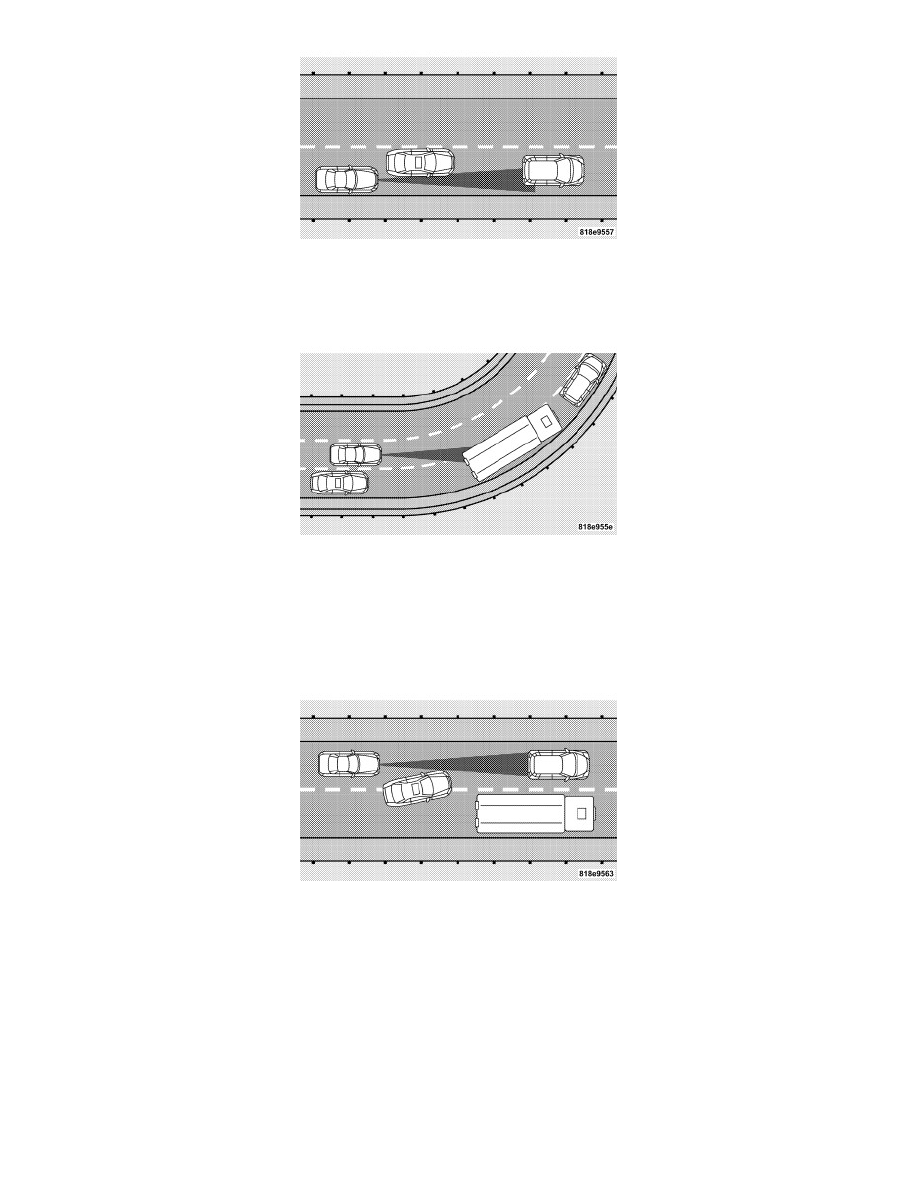Charger V6-3.5L (2009)

ACC may not detect a vehicle in the same lane that is offset from your direct line of travel. There will not be sufficient distance to the vehicle ahead. The
offset vehicle may move in and out of the line of travel, which can cause your vehicle to brake or accelerate unexpectedly.
Turns and Bends
In turns or bends, ACC may detect a vehicle ahead too late or too early. This may cause your vehicle to brake late or unexpectedly. Give extra attention
in curves and be ready to apply the brakes if necessary. Be sure to select an appropriate speed while driving in curves.
ACC may occasionally provide braking and/or a driver alert that you consider unnecessary. This may be the system's response to signs, guardrails, and
other stationary objects in a curve. This is normal operation and your vehicle does not require service.
Lane Changing
ACC will not detect a vehicle until it is completely in the lane in which you are travelling. In the illustration shown, ACC has not yet detected the vehicle
changing lanes, and it will not until it may be too late to take action. ACC will not detect a vehicle until it is completely in the lane. There will not be
sufficient distance to the lane-changing vehicle. Always be attentive and ready to apply the brakes if necessary.
Using ACC on Hills
